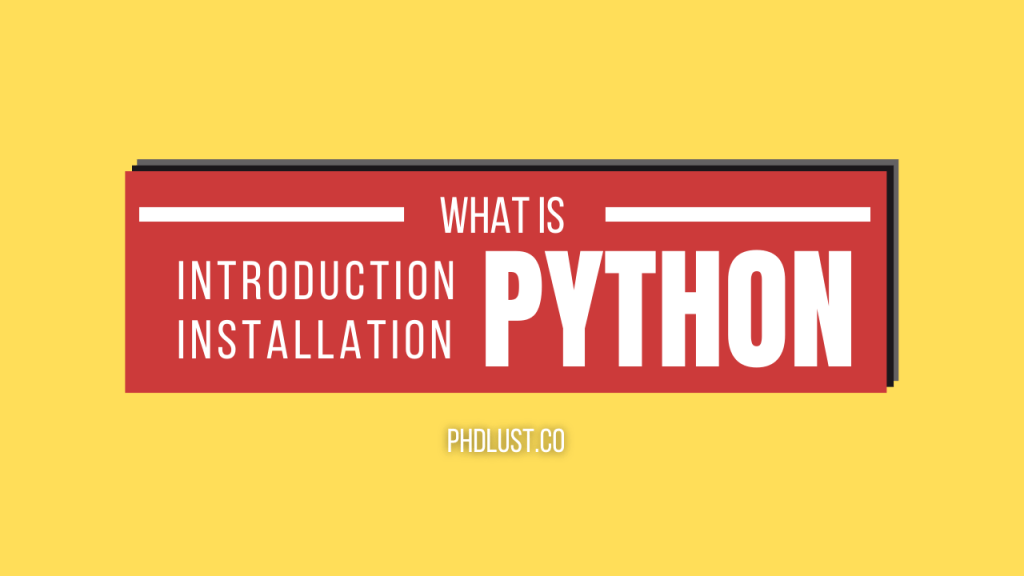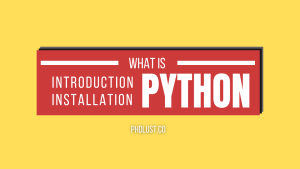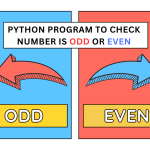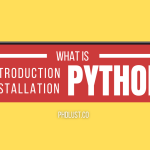Introduction to Python
Python is a powerful, high-level programming language that has taken the world by storm. Created by Guido van Rossum and first released in 1991, Python is designed with simplicity and readability in mind. This makes it an ideal language for beginners, yet it’s also robust enough to handle complex tasks in web development, data science, machine learning, automation, and more.
History of Python
Guido Van Rossum developed Python in the middle of the eighties and nineties. He developed it at the National Research Institute for Mathematics and Computer Science in the Netherlands.
It is derived from many languages like C, C++, Algol-68, ABC, Unix shell, etc.
Why Should You Learn Python?
Python’s popularity is rooted in its broad applicability across various domains. Here’s why you should consider learning Python:
- Easy to Learn and Use: Python’s syntax is designed to be intuitive and human-readable, which means beginners can start coding quickly and efficiently.
- Versatile: From web development with Django to data analysis with Pandas, Python is used in diverse areas, making it a valuable skill for any tech enthusiast.
- Large Community and Resources: Python’s active and supportive community ensures that developers have access to a wealth of resources, from tutorials to libraries that simplify complex tasks.
- In-Demand Skills: Python developers are highly sought after by employers, making Python a strategic skill for career advancement.
- Open Source: Python is free to use and distribute, even for commercial use
Additional Source Link:
- Python’s Popularity Explained – Insights from the Stack Overflow Developer Survey on why Python remains one of the most popular languages
What is OOP?
Object-Oriented Programming, commonly known as OOP, is a programming paradigm cantered around the concept of “objects.” These objects can represent real-world entities like a car, a person, or even a bank account, and they encapsulate both data (attributes) and behaviours (methods). But what exactly makes OOP so important in modern programming?
What is Python Used For?
- Web Development: Python is used in web development through frameworks like Django and Flask. These frameworks simplify building complex web applications.
- Data Science and Machine Learning: Python is the go-to language for data science, analytics, and machine learning, with popular libraries like Pandas, NumPy, SciPy, TensorFlow, and scikit-learn.
- Automation/Scripting: Python is often used to write scripts to automate repetitive tasks, such as file management, data processing, and testing.
- Software Development: Python is used for developing desktop applications and games. Frameworks like Kivy and PyQt help in building cross-platform applications.
- Cybersecurity: Python is widely used in cybersecurity for penetration testing and building security tools.
Installing Python
Popular Python IDEs include PyCharm (https://www.jetbrains.com/pycharm/), VS Code (https://code.visualstudio.com/), and Jupyter Notebook (https://jupyter.org/).
Before you can start coding in Python, you need to install it on your computer. Fortunately, the installation process is straightforward.
-
Download Python:
- Visit the official Python website: python.org.
- Navigate to the “Downloads” section.
- Select the appropriate version for your operating system (Windows, macOS, or Linux) and click the download button.
-
Install Python:
- Once the download is complete, open the installer.
- For Windows users, make sure to check the box that says “Add Python to PATH” before clicking “Install Now.” This will allow you to run Python from the command line.
- Follow the installation prompts until the process is complete.
-
Verify the Installation:
- Open your command line or terminal.
- Type
python --versionand press Enter. - If Python is installed correctly, you’ll see the version number displayed.
What’s Next?
With Python successfully installed, you’re all set to begin your programming journey. In the next blog post, we’ll explore the fundamental concepts of Python, such as variables, data types, and basic operations. These basics will lay the groundwork for more advanced topics as we continue our series.
Additional Source Link:
- Learn Python the Right Way – Start with simple automation tasks and gradually build up your Python skills.
Conclusion
Python’s simplicity and versatility make it an excellent starting point for anyone looking to enter the world of programming. Whether your goal is to build applications, analyze data, or automate everyday tasks, Python has something to offer. Stay tuned for the next installment of our Python Master Class series, where we’ll delve into Python’s core concepts.
Feel free to reach out in the comments if you encounter any issues during installation or if you have any questions about Python. We’re here to help!
Additional Source Link:
- Join the Python Community – Get involved with the Python community for additional support and resources
Author – ultroidxTeam , IND






thx you